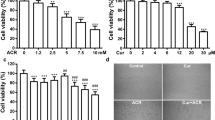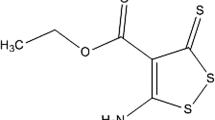Abstract
Caffeoylquinic acid (CQA) is one of the phenylpropanoids found in a variety of natural resources and foods, such as sweet potatoes, propolis, and coffee. Previously, we reported that 3,5-di-O-caffeoylquinic acid (3,5-di-CQA) has a neuroprotective effect against amyloid-β (Aβ)-induced cell death through the overexpression of glycolytic enzyme. Additionally, 3,5-di-CQA administration induced the improvement of spatial learning and memory on senescence accelerated-prone mice (SAMP8). The aim of this study was to investigate whether 3,4,5-tri-O-caffeoylquinic acid (3,4,5-tri-CQA), isolated from propolis, shows a neuroprotective effect against Aβ-induced cell death on human neuroblastoma SH-SY5Y cells. To clarify the possible mechanism, we performed proteomics and real-time RT–PCR as well as a measurement of the intracellular adenosine triphosphate (ATP) level. These results showed that 3,4,5-tri-CQA attenuated the cytotoxicity and prevented Aβ-mediated apoptosis. Glycolytic enzymes, phosphoglycerate mutase 1 (PGAM1) and glyceraldehyde-3-phosphate dehydrogenase (G3PDH) were overexpressed in co-treated cells with both 3,4,5-tri-CQA and Aβ. The mRNA expression of PGAM1, G3PDH, and phosphoglycerate kinase 1 (PGK1), and intracellular ATP level were also increased in 3,4,5-tri-CQA treated cells. Taken together the findings in our study suggests that 3,4,5-tri-CQA shows a neuroprotective effect against Aβ-induced cell death through the upregulation of glycolytic enzyme mRNA as well as ATP production activation.






Similar content being viewed by others
References
Atamna H, Frey WHII (2007) Mechanisms of mitochondrial dysfunction and energy deficiency in Alzheimer’s disease. Mitochondrion 7:297–310
Boyd-Kimball D, Sultana R, Poon HF, Lynn BC, Casamenti F, Pepeu G, Klein JB, Butterfield DA (2005) Proteomic identification of proteins specifically oxidized by intracerebral injection of amyloid β-peptide (1–42) into rat brain: implications for Alzheimer’s disease. Neuroscience 132:313–324
Butterfield DA, Boyd-Kimball D (2005) The critical role of methionine 35 in Alzheimer’s amyloid beta-peptide (1–42)-induced oxidative stress and neurotoxicity. Biochim Biophys Acta 1703:149–156
Canback B, Andersson SGE, Kurland CG (2002) The global phylogency of glycolytic enzymes. Proc Natl Acad Sci USA 99:6097–6102
Cardoso SM, Santos S, Swerdlow RH, Oliveira CR (2001) Functional mitochondria are required for amyloid beta-mediated neurotoxicity. FASEB J 15:1439–1441
Castegna A, Thongboonkerd V, Klein JB, Lynn B, Markesbery WR, Butterfield DA (2003) Proteomic identification of nitrated proteins in Alzheimer’s disease brain. J Neurochem 85:1394–1401
Clifford MN, Wu W, Kirkpatrick J, Kuhnert N (2007) Profiling the chlorogenic acids and other caffeic acid derivatives of herbal chrysanthemum by LC-MS. J Agric Food Chem 55:929–936
Farah A, Paulis TD, Trugo LC, Martin PR (2005) Effect of roasting on the formation of chlorogenic acid lactone in coffee. J Agric Food Chem 53:1505–11513
Ferrer I (2009) Altered mitochondria, energy metabolism, voltage-dependent anion channel, and lipid rafts converge to exhaust neurons in Alzheimer’s disease. J Bioenerg Biomembr 41:425–431
Han J, Miyamae Y, Shigemori H, Isoda H (2010) Neuroprotective effect of 3, 5-di-O-caffeoylquinic acid on SH-SY5Y cells and SAMP8 mice through the up-regulation of PGK1. Neuroscience 169:1039–1045
Isoda H, Talorete TPN, Han J, Nakamura K (2006) Expresion of galectin-3, glutathione S-transferase A2 and peroxiredoxin-1 by nonyphenol-incubated Caco-2 cells and reduction in transepithelial electrical resistance by nonyphenol. Toxicol In Vitro 20:63–70
Kim JW, Dang CV (2005) Multifaceted roles of glycolytic enzymes. Trends Biochem Sci 30:142–150
Kimura Y, Okuda H, Okuda H, Hatano T, Agata I, Arichi S (1985) Inhibitory effects of caffeoylquinic acids on histamine release from rat peritoneal mast cells. Chem Pharm Bull 33:690–696
Kondoh H, Lleonart ME, Gil J, Wang J, Degan P, Peters G, Martinez D, Carnero A, Beach D (2005) Glycolytic enzymes can modulate cellular life span. Cancer Res 65:177–185
Korolainen MA, Goldsteins G, Nyman TA, Alafuzoff I, Pirttila T (2005) Proteomic analysis of glial fibrillary acidic protein in Alzheimer’s disease and aging brain. Neurobiol Dis 20:858–870
Korolainen MA, Goldsteins G, Nyman TA, Alafuzoff I, Koistinaho J, Pirttilä T (2006) Oxidative modification of proteins in the frontal cortex of Alzheimer’s disease brain. Neurobiol Aging 27:42–53
Kurata R, Adachi M, Yamakawa O, Yoshimoto M (2007) Growth suppression of human cancer cells by polyphenolics from sweetpotato (Ipomoea batatas L.) leaves. J Agric Food Chem 55:185–190
Liu X, Shibata T, Hisaka S, Osawa T (2009) Astaxanthin inhibits reactive oxygen species-mediated cellular toxicity in dopaminergic SH-SY5Y cells via mitochondria-targeted protective mechanism. Brain Res 1254:18–27
Matharu B, Gibson G, Parsons R, Huckerby TN, Moore SA, Cooper LJ, Millichamp R, Allsop D, Austen B (2009) Galantamine inhibits β-amyloid aggregation and cytotoxicity. J Neurol Sci 280:49–58
Matsui T, Ebuchi S, Fujise T, Abesundara KJ, Doi S, Yamada H, Matsumoto K (2004) Strong anti hyperglycemic effects of water-soluble fraction of Brazilian propolis and its bioactive constituent, 3, 4, 5-tri-O-caffeoylquinic acid. Biol Pharm Bull 27:1797–1803
Mazzolaa JL, Sirover MA (2003) Subcellular alternation of glyceraldehyde-3-phosphate dehydrogenase in Alzheimer’s disease fibroblasts. J Neurosci Res 71:279–285
Merfort I (1992) Caffeoylquinic acids from flowers of Arnica Montana and Arnica chamissonis. Phytochemistry 31:2111–2113
Miranda S, Opazo C, Larrondo LF, Munoz FJ, Ruiz F, Leighton F, Inestrosa NC (2000) The role of oxidative stress in the toxicity induced by amyloid β-peptide in Alzheimer’s disease. Prog Neurobiol 62:633–648
Mishima S, Inoh Y, Narita Y, Ohta S, Sakamoto T, Araki Y, Suzuki K, Akao Y, Nozawa Y (2005) Identification of caffeoylquinic acid derivatives from Brazilian propolis as constituents involved in induction of granulocytic differentiation of HL-60 cells. Bioorg Med Chem 13:5814–5818
Mosmann T (1983) Rapid colorimetric assay for cellular growth and survival: application to proliferation and cytotoxicity. Anal Biochem 65:55–63
Qi XL, **u J, Shan KR, **ao Y, Gu R, Liu RY, Guan ZZ (2005) Oxidative stress induced by beta-amyloid peptide1–42 is involved in the altered composition of cellular membrane lipids and the decreased expression of nicotinic receptors in human SH-SY5Y neuroblastoma cells. Neurochem Int 46:613–621
Ramassamy C, Averill D, Beffert U, Bastianetto S, Theroux L, Lussier-Cacan S, Chon JS, Christen Y, Davignon J, Quirion R, Poirier J (1999) Oxidative damage and protection by antioxidants in the frontal cortex of Alzheimer’s disease is related to the apolipoprotein E genotype. Free Radic Biol Med 27:544–553
Reed T, Perluigi M, Sultana R, Pierce WN, Klein JB, Turner DM, Coccia R, Markesbery WR, Butterfield DA (2008) Redox proteomic identification of 4-Hydroxy-2-nonenal-modified brain proteins in amnestic mild cognitive impairment: insight into the role lipid peroxidation in the progression and pathogenesis of Alzheimer’s disease. Neurobiol Dis 30:107–120
Shi C, Zhao L, Zhu B, Li Q, Yew DT, Yao Z, Xu J (2009) Protective effects of Ginkgo biloba extract (EGb761) and its constituents quercetin and ginkgolide B against β-amyloid peptide-induced toxicity in SH-SY5Y cells. Chem Biol Interact 181:115–123
Sirover MA (1999) New insights into an old protein: the functional diversity of mammalian glyceraldehyde-3-phosphate dehydrogenase. Biochem Biophys Acta 1432:159–184
Sultana R, Boyd-Kimball D, Poon HF, Cai J, Pierce WM, Klein JB, Merchantt M, Markesbery WR, Butterfield DA (2006) Redox proteomics identification of oxidized proteins in Alzheimer’s disease hippocampus and cerebellum: an approach to understand pathological and biochemical alternations in AD. Neurobiol Aging 27:1564–1576
Wang H, Xu Y, Yan J, Zhao X, Sun X, Zhang Y, Guo J, Zhu C (2009) Acteoside protects human neuroblastoma SH-SY5Y cells against β-amyloid-induced cell injury. Brain Res 1283:139–147
Yang JL, Weissman L, Bohr VA, Mattson MP (2008) Mitochondrial DNA damage and repair in neurodegenerative disorders. DNA Repair 7:1110–1120
Yoshimoto M, Yahara S, Okuno S, Islam MS, Ishiguro K, Yamakawa O (2002) Antimutagenicity of mono, di, and tri caffeoylquinic acid derivatives isolated from sweetpotato (Ipomoea batatas L.) leaf. Biosci Biotechnol Biochem 66:2336–2441
Zheng L, Roeder RG, Luo YS (2003) Phase activation of the histone H2B promoter by OCA-S, a coactivator complex that contains GAPDH as a key component. Cell 114:255–266
Author information
Authors and Affiliations
Corresponding authors
Rights and permissions
About this article
Cite this article
Miyamae, Y., Han, J., Sasaki, K. et al. 3,4,5-tri-O-caffeoylquinic acid inhibits amyloid β-mediated cellular toxicity on SH-SY5Y cells through the upregulation of PGAM1 and G3PDH. Cytotechnology 63, 191–200 (2011). https://doi.org/10.1007/s10616-011-9341-1
Received:
Accepted:
Published:
Issue Date:
DOI: https://doi.org/10.1007/s10616-011-9341-1




